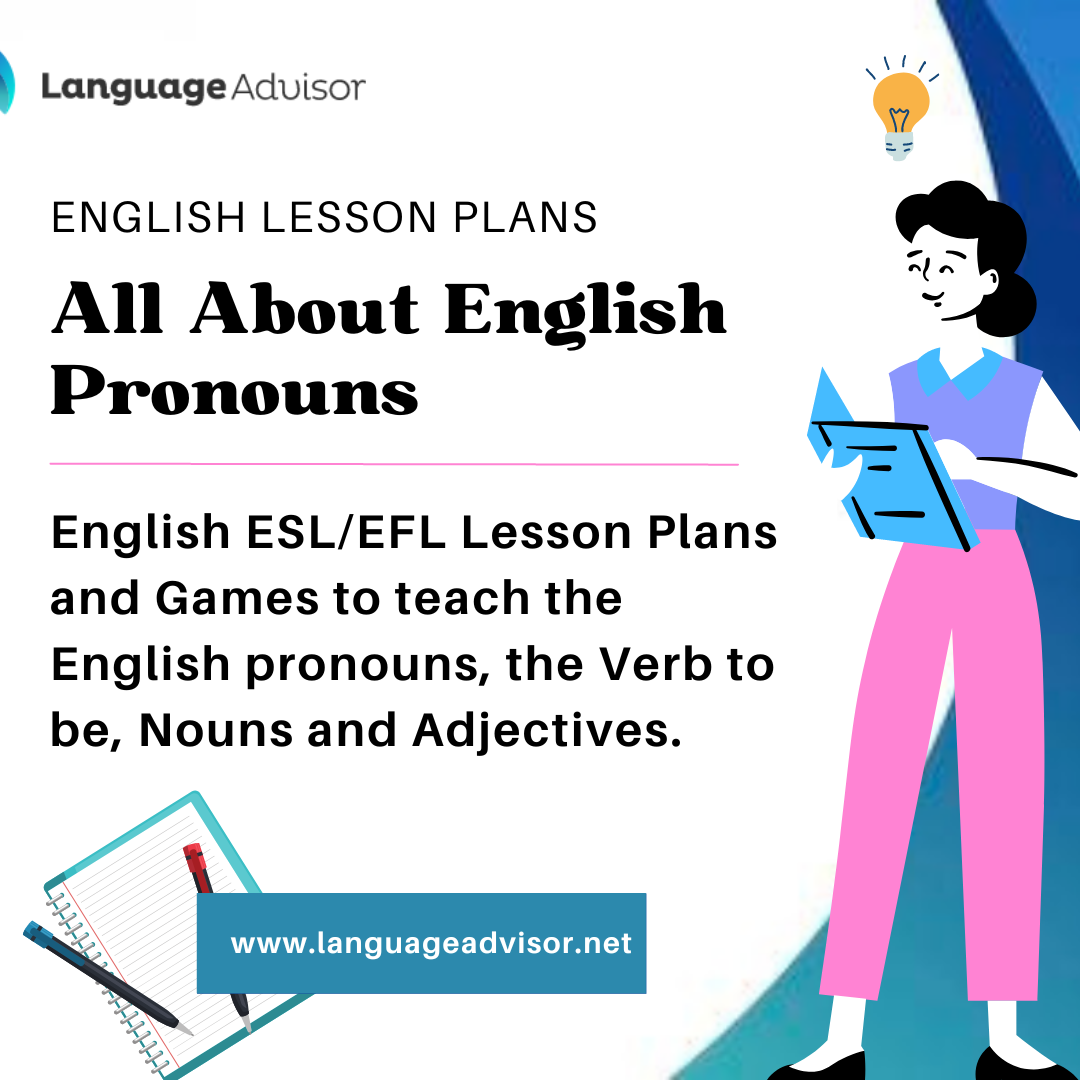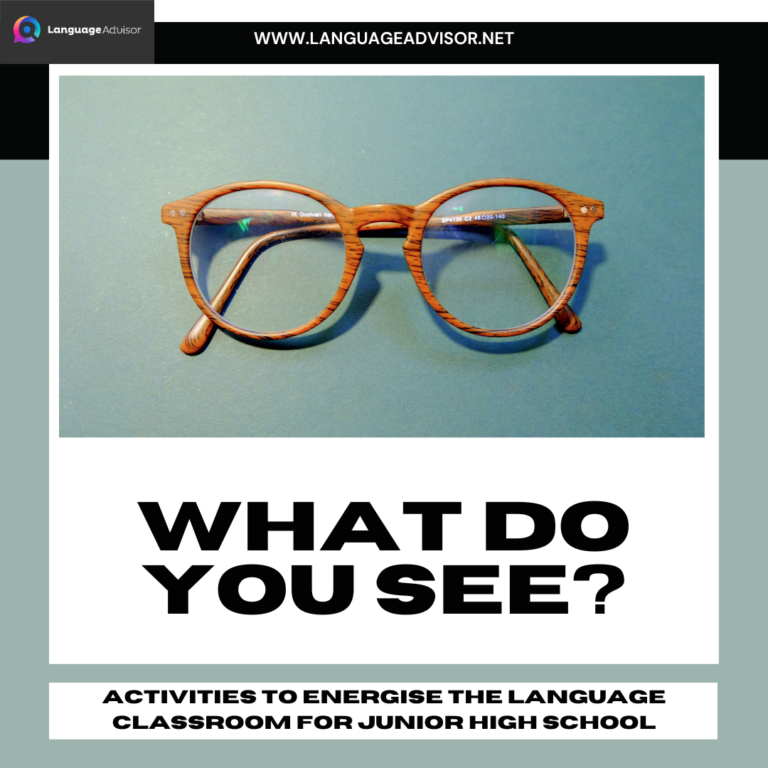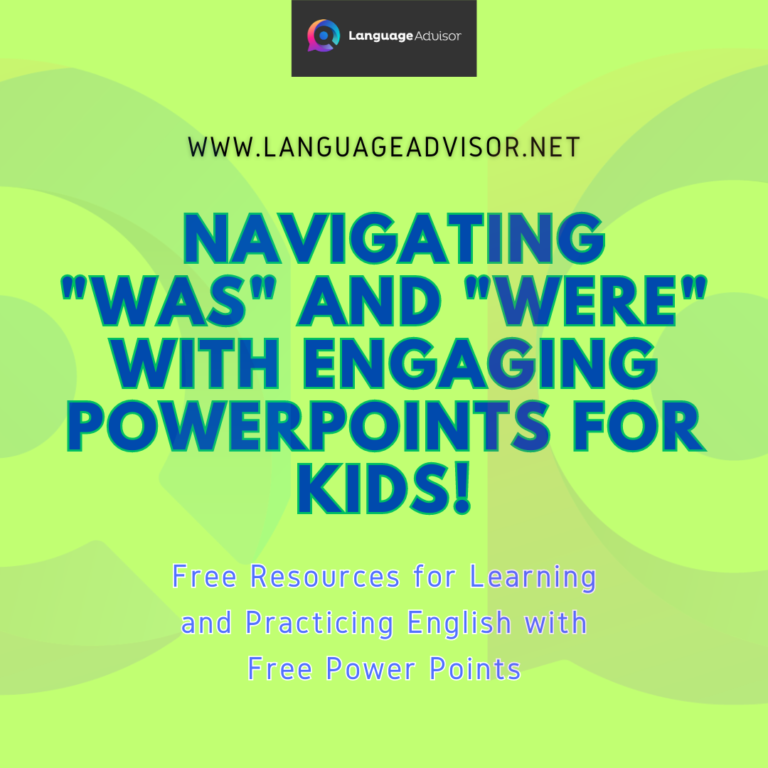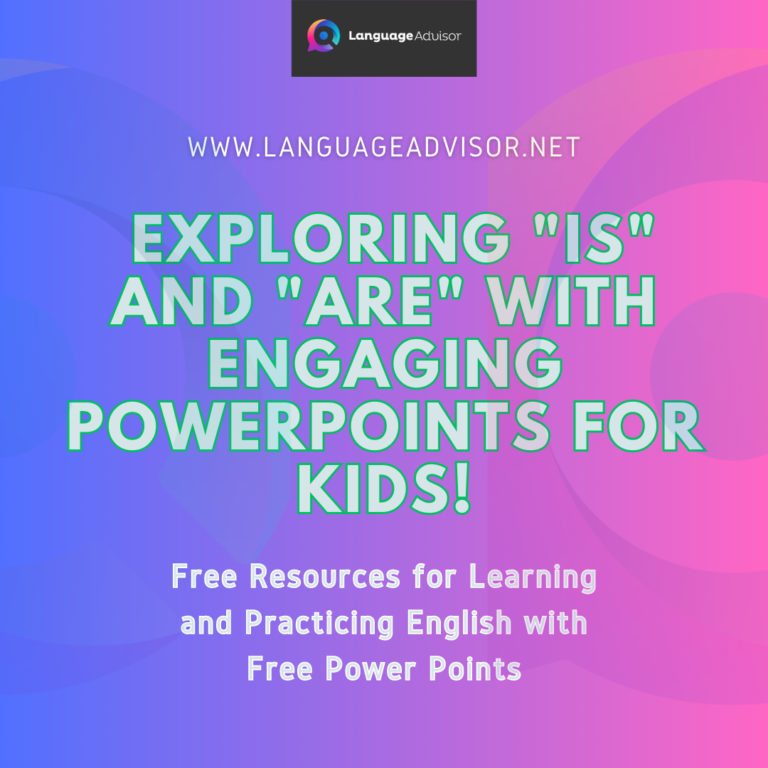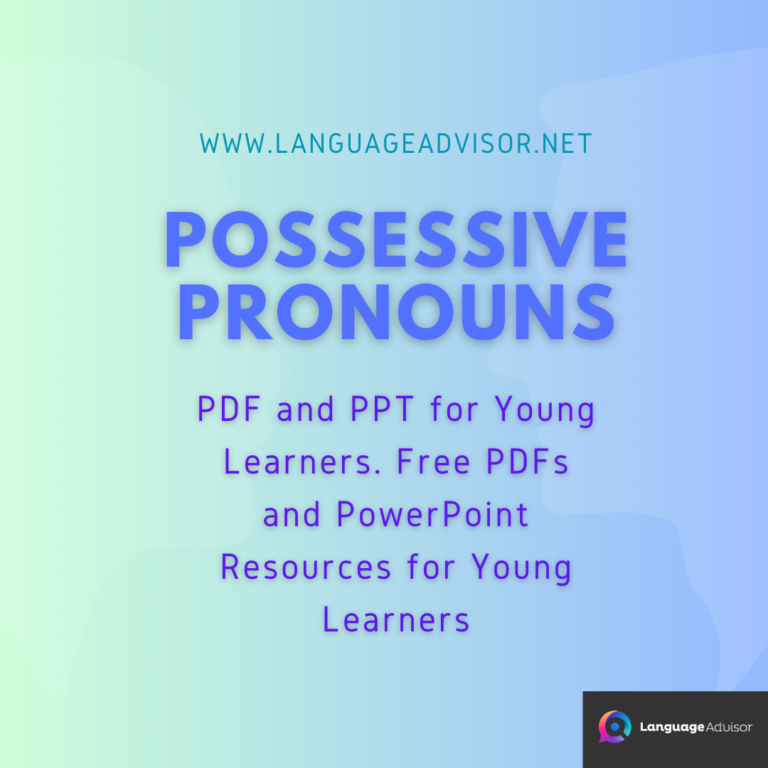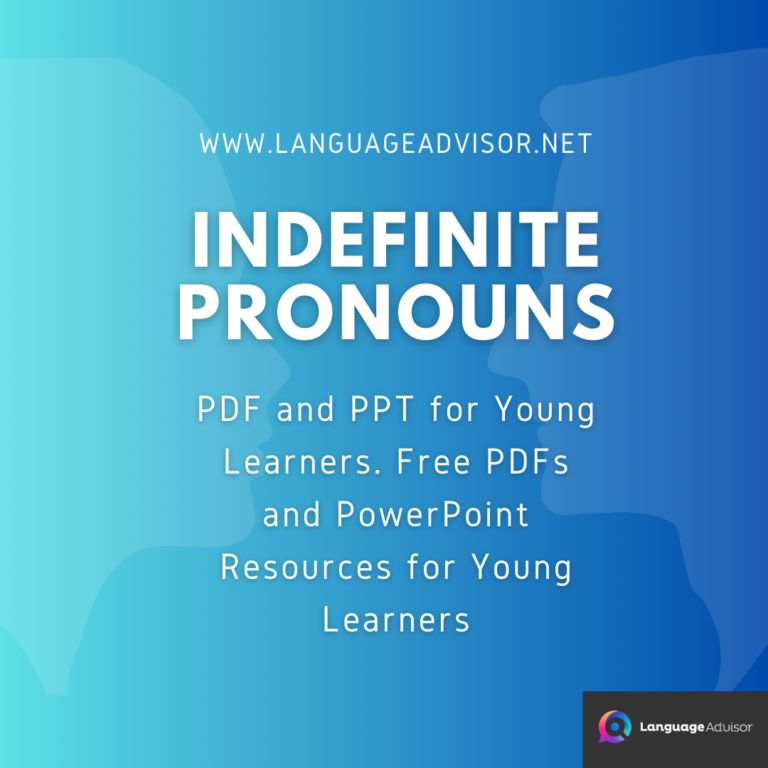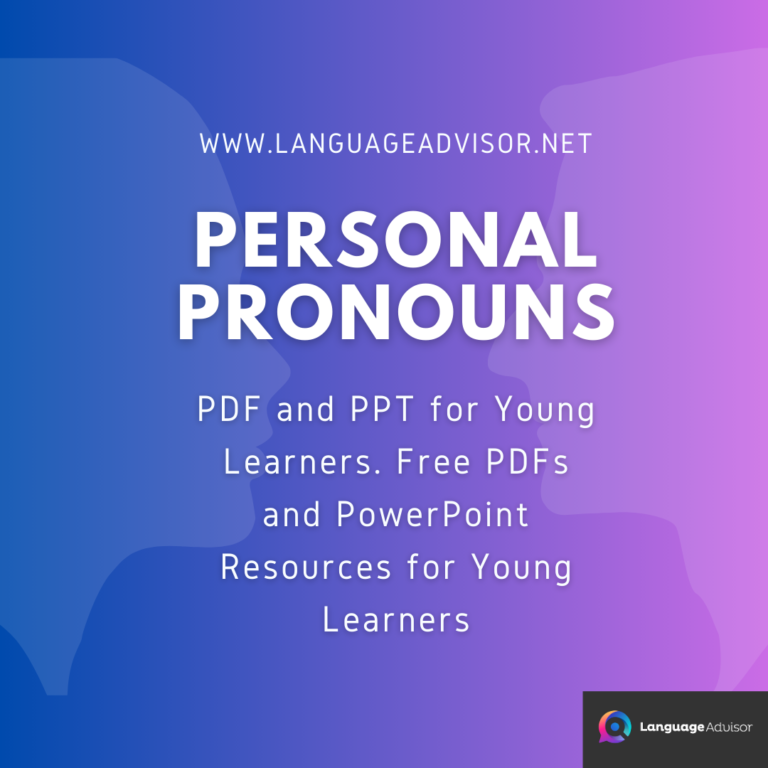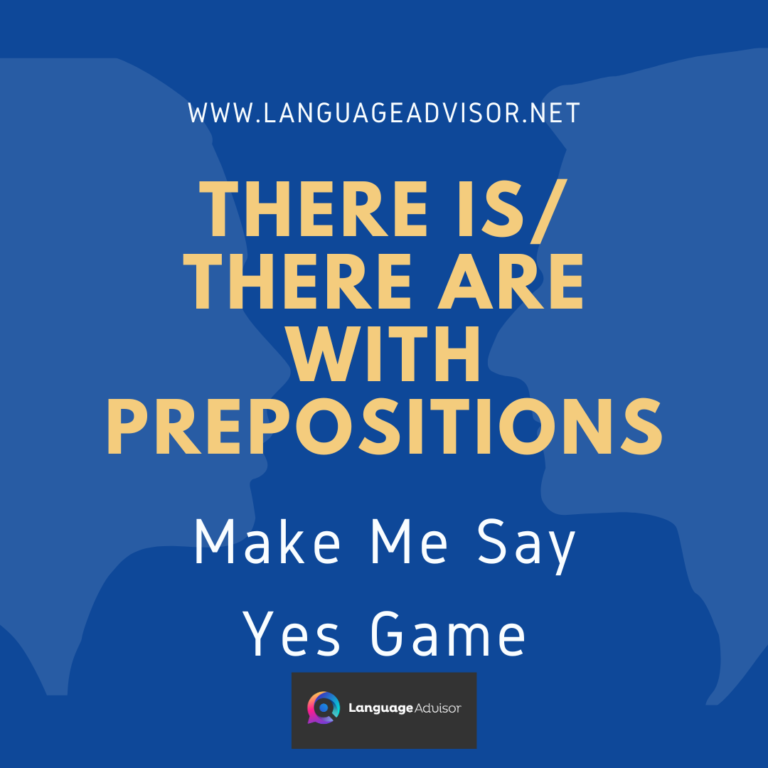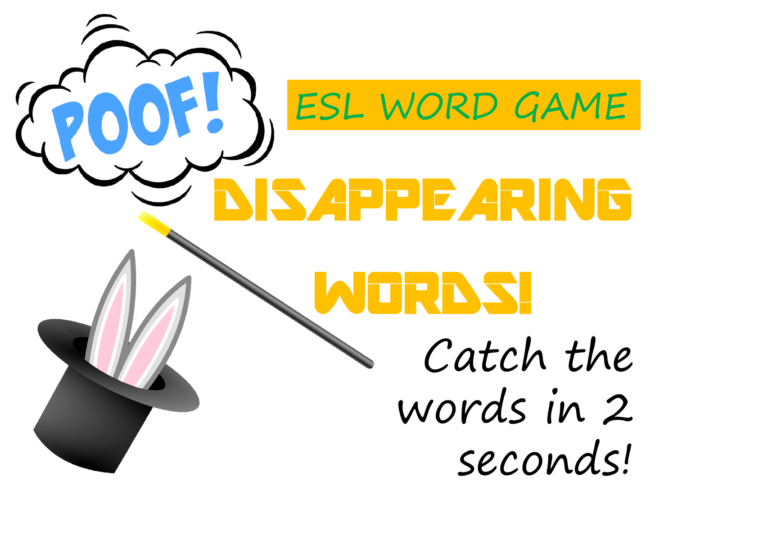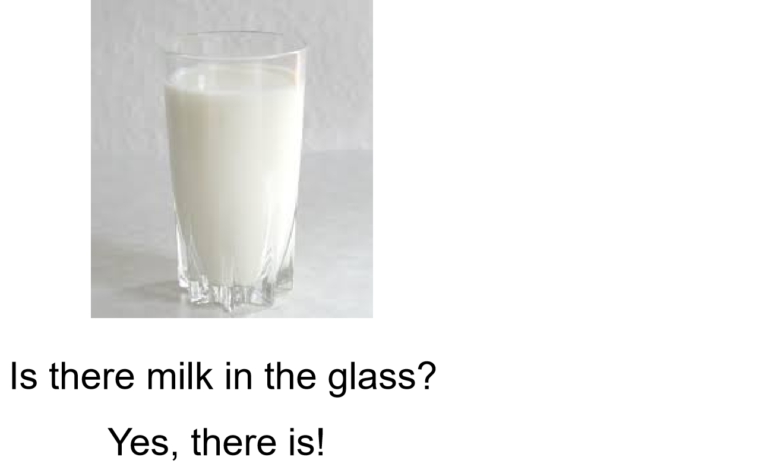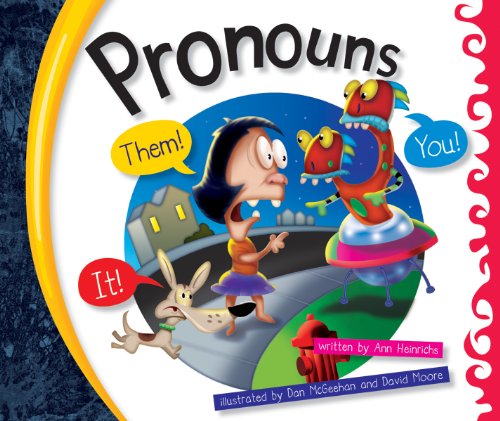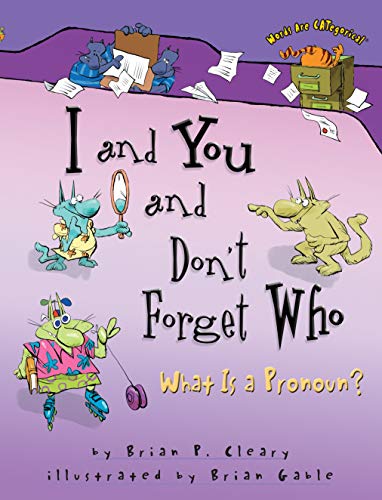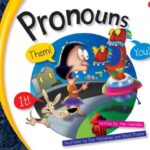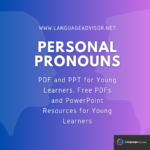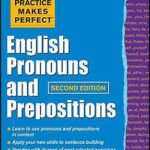All About English Pronouns. English ESL/EFL Lesson Plans and Games to teach the English pronouns, the Verb to be, Nouns and Adjectives.
All About English Pronouns

Lesson plans
Here you can find a wide range of full lesson plans to use in your classroom.
All of our lessons are designed around themes engaging and relevant to English ESL-EFL learners and can be used to complement your school curriculum, giving students an opportunity to develop their English language and skills in motivating and enjoyable ways.
These lesson plans focus on classroom games and activities oriented around meaningful practice of grammar items in English. The vast majority of the activities have been designed to be simple and easy to apply, without requiring much in the way of additional resources or materials. Wherever possible, games have been presented in a way that makes full use of any natural or genuine communicative aspects embodied in the grammar constructions, though while there is emphasis on understanding the grammar and its functional and communicative aspects, most of the games also highlight the importance of using the grammar accurately.
These lesson plans are intended as a starting point for teachers to adapt and build their own stock of in-class games and activities that can be applied relatively quickly and easily.

All About English Pronouns
All About English Pronouns: Here are six lesson plans on English Pronouns
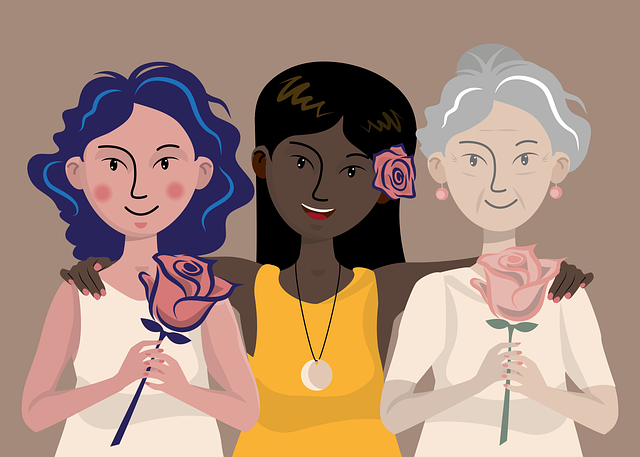
“Be” Verb: 1st/2nd Person
Objectives:
Linking Pronouns with adjectives.
Practice:
The teacher elicits a range of adjectives from students that could be used to describe people. Care needs to be taken to ensure that none of them are too negative or potentially embarrassing as ‘labels’ for the students. List these on the board and ensure there are more of them than the total number of students in the classroom.
Then commence a rotation-memory game as per this example:
Teacher: I am tall.
Student 1: You are tall [points at teacher] and I am short.
Student 2: You are tall [points at teacher] and you are short [points at student 1]. I am clever.
Student 3: You are tall [points at teacher] you are short [points at student 1] and you
are clever [points at student 2]. I am shy.
Student 4: You are tall [points at teacher] you are short [points at student 1], you are clever [student 2] and you are shy [student 3]. I am brave.
At some point, the game can be adapted so that it uses contracted forms of the verb to “be” with the relevant pronouns (for example, “I’m” and “You’re”), or the 2nd person form could be used to address the student immediately next to oneself and the 3rd person forms are then used for the remainder of the previous students, so that in the previous game illustrated, student 4’s statement would look like:
Student 4: He is tall [points at teacher] she is short [points at student 1], he is clever
[student 2] and you are shy [student 3]. I am brave.
Another variation of the game is to select adjectives that have silly or negative connotations, in which case the students can get practice using negation with the verb to “be” – for example:
Student 4: He is not silly [points at teacher] she is not stupid [points at student 1], he is not smelly [student 2] and you are not ugly [student 3]. I am not crazy.


Find the Astronaut
Objectives:
Yes/No Questions + Occupations
Practice/ Presentation:
This game is called “Find the Astronaut”, but it could well be called “Find the Hero” or “Find the Thief” for that matter.
It would be useful to have flashcards for this game, but strips of paper with occupations written on them would be just as practical. One student steps out of the room while the teacher distributes the occupation cards to individual students. They then hide these cards but must remember what their occupations are. The other student then returns and has three chances to “Find the Astronaut”. Here’s an example:
Student 1: Are you the astronaut? [Points at student 2]
Student 2: No, I’m not [holds up her card]. I’m the doctor.
Student 1: Are you the astronaut? [Points at student 4]
Student 4: No, I’m not [holds up his card]. I’m the police officer.
Student 1: Are you the astronaut? [Points at student 7]
Student 7: Yes, I am! [holds up his card]. I’m the astronaut!
Students get three points for guessing who the astronaut is within three turns, but any student can lose a point by not using the verb to “be” plus pronoun and/or negative particle when they attempt to answer a student’s question.


Pronouns
Objectives:
Students should be able to understand and identify pronouns.
Presentation: Have the students write down in their notebooks all the pronouns and the translations.
Practice:
– Pass out magazines and have the students find a picture in
which to then write about using the appropriate pronoun(s). The students should take this time to select a picture and then write a paragraph (7-10) sentences using as many pronouns as possible.
– Have the students share their pictures and their stories with the whole class upon completion. For this in-class activity give them approximately 10-20 minutes.
Homework: Have the students write 5 sentences using all the new pronouns learned


Pronouns, the “to be” Verb, and Nouns
Objective:
Students should be able to use “am”, “is”, and “are” with their corresponding
pronouns. The verb is not the focus of this lesson; simply present it as being associated with the pronoun.
Warm-Up:
Review the previous lesson on pronouns by going over the homework.
Presentation:
– Introduce topic by writing on the board the sentence structures “I am a girl.” “You are a boy.” “He is a brother.” “She is a daughter.” “It is a pen.” “We are students.” “They are people.”
– Emphasize that “We / They” do not have the article “a” or “an” and must be pluralized. Also, they should be able to note that these plural pronouns are used with the verb “are”. See above examples.
Practice:
– Have students create an “I am a _____” sentence using nouns they already know. For example: I am a student.
– Then have students create a “You are a ______” sentence about you (the teacher), again using words they already know. For example: You are a teacher.
– Have students pick a male from the classroom and create a sentence in the form of “He is a _______.”
– This same process should be repeated with the females in the classroom.
– Have the students create a sentence about themselves writing, “We are ____.”
– Finally, have the class write a sentence about another class in the school writing, “They are ____.”
– Once this part of the activity is completed, go around the room and have the students share their written responses, which will give them reading and speaking practice.
Homework: Students must write 7 sentences, one for each pronoun using vocabulary words they already know.

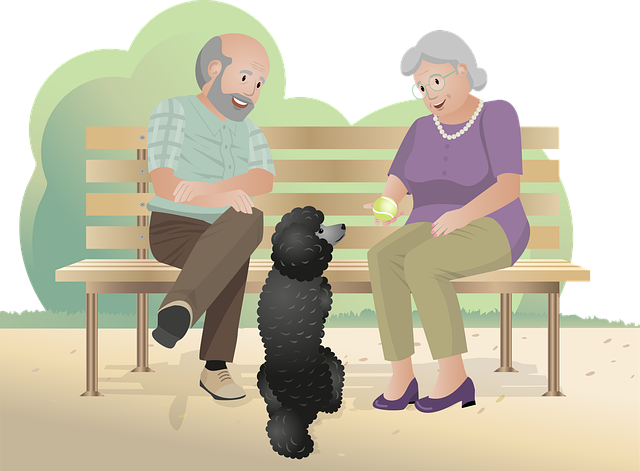
Pronouns, the “to be” Verb, and Adjectives
Objective:
Students should be able to use “am,” “is,” and “are with their corresponding pronouns. Again do not worry too much about the verb usage, because right now the focus is pronoun usage with adjectives. Also, students should learn new adjective vocabulary words.
Warm-Up:
Review the previous lesson on pronouns.
Presentation:
Introduce the idea of this lesson by writing the following sentence structures on the board:
I am short.
You are nice.
He is tall.
She is pretty.
It is big.
We are happy.
They are funny.
Practice:
– Have the class do the below activity using these new vocabulary words:
1. short =
2. sad =
3. tall =
4. funny =
5. big =
6. serious =
7. small =
8. friendly =
9. nice =
10. smart =
11. mean =
12. fast =
13. handsome =
14. slow =
15. pretty =
16. athletic =
17. ugly =
18. old =
19. happy =
20. young =
– Have students create an “I am a _____” sentence using nouns they already know. For example: I am short.
– Then have students create a “You are a ______” sentence about you (the teacher), again using words they already know. For example: You are nice.
– Have students pick a male from the classroom and create a sentence in the form of “He is a _______.”
– This same process should be repeated with the females in the classroom. – The class should be able to create a sentence using “It” as well, but it may be a little more difficult for them to grasp.
– Have the students create a sentence about themselves writing, “We are ____.”
– Finally, have the class write a sentence about another class in the school writing, “They are ____.”
– Once this part of the activity is completed, go around the room and have the students share their written responses, which will give them reading and speaking practice.
Homework:
Students must write 7 sentences one for each pronoun using the new adjective vocabulary words.

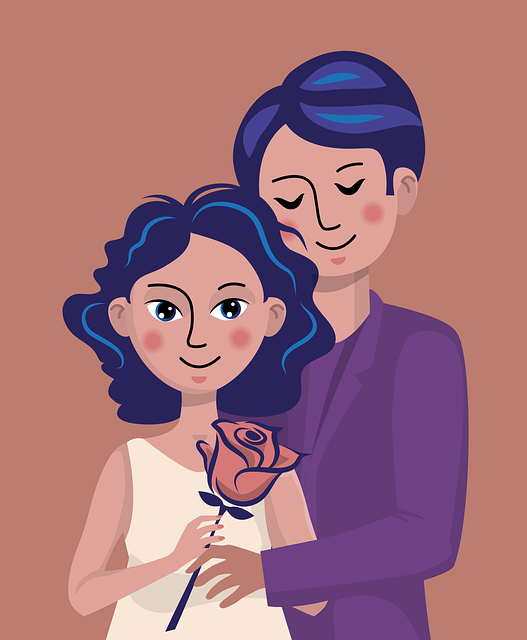
Pronouns: Subject & Object
Objective:
Replacing subject/object nouns.
Presentation:
This Q&A circular game facilitates the replacement of nouns (subject and object) with their pronoun forms through the idea of talking about likes and dislikes.
Practice
The fourth student in the sequence summarizes the four results up to that point before asking a new question to get the next round started. Example:
Teacher: Do you like soccer, Tony?
Student 1: Yes, I like it. Do you like ice cream, Lisa?
Student 2: Yes, I like it. Do you like strawberries, Rachel?
Student 3: Yes, I like them. Do you like television, Sam?
Student 4: No, I don’t like it. I don’t like television, she likes strawberries, she likes ice cream, and he likes soccer [pointing to each student]. Do you like bananas, Harry?
After a complete round of the entire class, perhaps reshuffle students’ seating arrangements so that in the new round some different students get a chance to try the summarizing stage (and subject rather than object conversions) following four questions.

All About English Pronouns: Also Check out these resources on the English Pronouns


